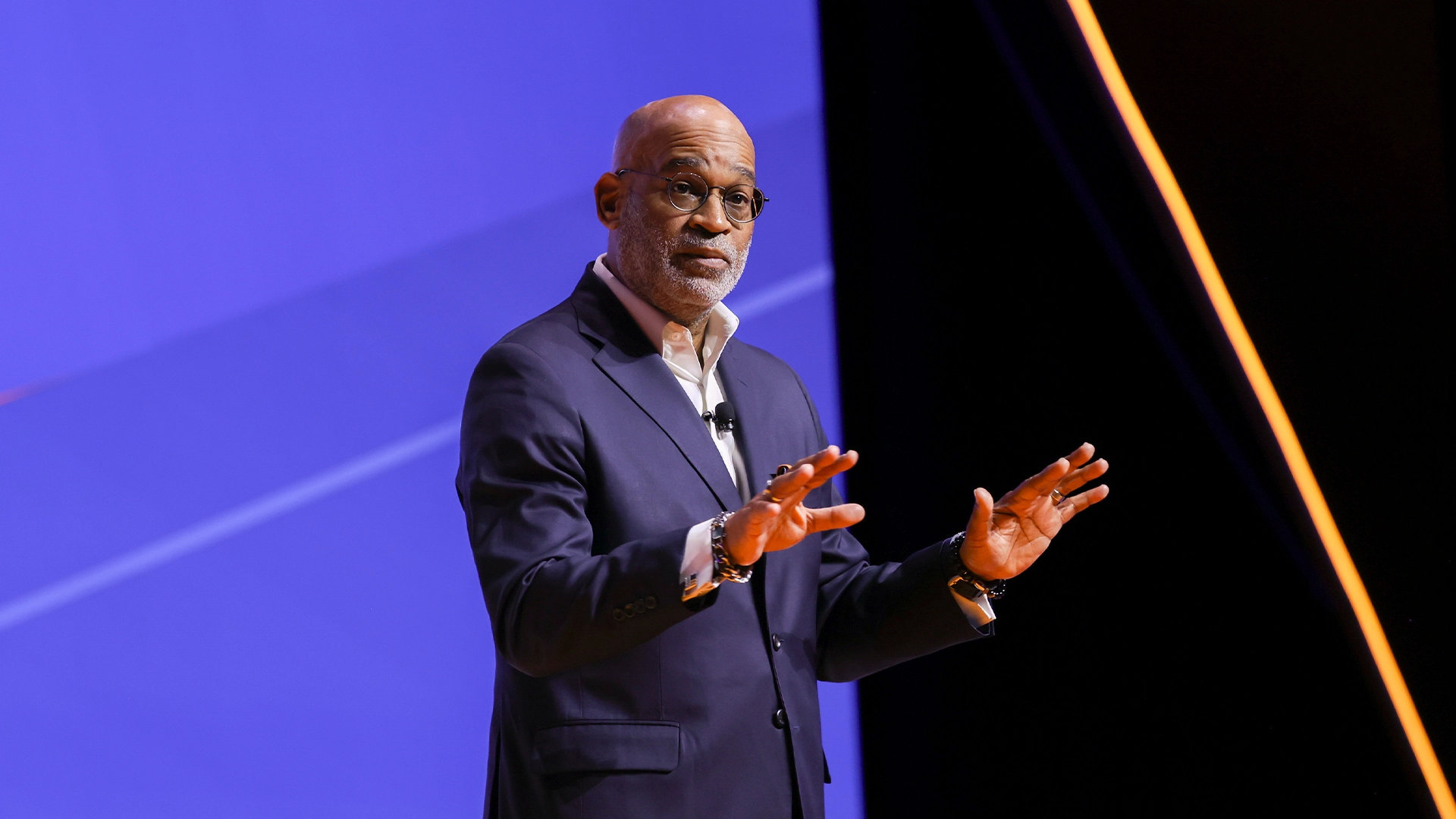How LED Tube Types Change the Impact of Your Retrofit
ELECTRICAL & LIGHTING
TLEDs Have Three Main Types: A, B, and C
Building consensus on replacing fluorescents isn't complicated. It's not harsh to say fluorescent light has few fans, and today's LED technology certainly provides options for light quality and energy savings. Options are great, but they also introduce complexity that can slow down consensus building on design choices.
Instead of color temperature or wattage, Type A, Type B, and Type C describe different ways tubular LEDs (TLEDs) achieve retrofit goals. Choosing a type isn't just about the lamp itself, it's about the lighting as a system, including how the luminaires are wired and process power.
- Type A: Uses Ballast
- Type B: Doesn't Use Ballast
- Type A/B: Hybrid can use ballast or not
- Type C: Uses LED Driver
Why Is the Type Important?
Around 50% of light fixtures in all commercial spaces are troffers.1 That's the recessed rectangle you expect to see in the ceilings of offices, schools, hospitals, and retail spaces. Fluorescent lights in troffers have been a staple of lighting for a long time.
TLED replacements for fluorescent tubes offer new opportunities to improve lighting quality and reduce costs for facilities like offices and schools. The type of replacement chosen also impacts maintenance, operations, and safety concerns. There are also health issues to consider, as we'll see.
The three main types are wired and installed differently, based on how the power used by the TLED is regulated. This isn't a brand-new need of LEDs. Fluorescent tubes need their power regulated, too. Without a ballast to regulate incoming power, fluorescent lights draw too much current and overheat or burn out. LEDs have a similar need, a driver that converts high voltage and alternating current to lower voltage, direct current.
Type A uses the same strategy as fluorescent tubes, relying on an external ballast, and most are designed to be compatible with a wide range of ballasts already in use. Type B doesn't use an external ballast, bringing those functions inside, with the LED driver needs taken care of by the lamp itself. Type A/B is a hybrid, designed to work in installations with and without ballasts, where the point is flexibility. Type C lamps use an external LED driver, similar to a ballast, but since it's specific to LED technology, it can expand the lamp's capabilities, most notably by introducing a controllable dimming system.
TYPE A BASICS
- LOWER INSTALLATION COSTS
- EFFICIENCY DEPENDS ON BOTH LAMP AND BALLAST
- BALLASTS MAY ADD TO MAINTENANCE COSTS LATER
TYPE B BASICS
- CAN HAVE HIGHER INSTALLATION COSTS
- EFFICIENCY DOESN'T DEPEND ON BALLASTS
- MORE COMPLEX COMPLIANCE AND SAFETY ISSUES
TYPE C BASICS
- CAN HAVE HIGHER INSTALLATION COSTS
- EFFICIENCY DOESN'T DEPEND ON BALLASTS
- SOME MODIFICATION TO EXISTING FIXTURES REQUIRED
How the Type Affects Your Costs
Let's start with Type A. You might see Type A TLEDs described as "plug & play" because they are designed to use the ballasts already in use for fluorescent installations. Depending on the ballasts you have in place for your fluorescents, you may be able to just switch to TLEDs and leave the ballasts in place. Type A installations can have lower installation costs because of the simpler installation process.
That comes with some caveats, of course. Not all TLEDs are compatible with every kind of ballast. Depending on how old your ballasts are, you may want to replace them anyway, as they may be near the end of their useful life or there are better options for potential energy efficiency.2
Many Type A lamps are intended to be compatible with a wide range of existing ballasts, but that doesn't ensure they always are. In practice, even after field testing for compatibility, facilities often discover other types of ballasts in their buildings that don't match the tested lamps. To avoid combability issues, best practices recommend installing new ballasts to be sure. It's also important to balance the costs of replacing ballasts during the retrofit against costs of maintenance and later replacement if you don't.
Type B doesn't need a ballast. That can introduce higher energy efficiency and can be a more cost-effective option in terms of long-term maintenance and replacements: maintaining and replacing just one thing (the lamp itself) should cost less over time than maintaining and replacing two things (the lamp and the ballast or driver it needs).
That's not the whole story of a Type B retrofit, though. The idea of reduced failure points (lamp and ballast instead of just lamp) is worth consideration. However, cutting the ballast out of the setup means changing the setup you have. Depending on the wiring and sockets in place, the Type B's "direct wire" strategy can translate to a higher up-front cost.
If you don't see that higher up-front cost accounted for by the electrical contractor or energy services company (ESCO) submitting the bid, it's important to ask why. It's a rough estimate, but a properly implemented Type B retrofit can cost 25% to 30% more than a Type A retrofit because of the higher lamp cost and the additional labor to properly replace the sockets and wiring involved.
Not all nicely priced Type B installs are cutting comers, of course, but it is important to check. If you're seeing a lower install price because they're recommending a simple removal of the ballast and connecting the existing power feed to the existing socket, that can lead to a National Electrical Code (NEC) violation, depending on your existing wiring and your chosen lamp. The wiring must be appropriate for the voltage and appropriately labeled³ to avoid safety issues. It may also be in conflict with Underwriters Laboratories (UL) compliance standards.4 Last but not least, Type B lamps may require additional safety precautions, such as the recommendation that an in-line fuse kit should also be installed. Newer Type B models have been designed to address some of these concerns, but it's important to understand the complete installation costs and safety issues.
Type C installations are designed to take full of advantage of new technology, with an LED driver that's external to the tube. That means changing out your ballasts for drivers and can also mean changing out the wiring. So there are up-front installation labor costs, but there are also positives. The driver and tube combination helps address some of the design limitations on Type B bulbs, with more space and separate temperature concerns generally helping the design achieve better efficiency. It also introduces more functionality, like dimming.
Ballasts and Maintenance
It's easy to try to reduce the difference in types to simple recommendations like "Type B eliminates the ballast and reduces future maintenance costs, but there's more to it than that. Type B lamps still need that function, they just have it integrated inside. Those parts are still subject to failure. That and the higher heat loads a Type B lamp may experience from internalizing those functions are good reasons why Type B lamps can be rated with shorter lamp life.5
Lamp life can be an important factor in your maintenance and operations, as well as your capital planning. Ask for a comprehensive comparison that plans for these costs. Manufacturer data isn't always reliable, and in some cases, newer technology really only has projections for expected lamp life. Some retrofit partners field-verify product claims as a best practice. Asset life for new designs is impractical to test for, however, so some approximations and technical community consensus will have to be relied on.
Don't Forget the Flicker Factor
Flicker is the rapid modulation of light. It's not a full strobe effect - the light is fully on and operating normally - the problem is when normal operation also includes an extremely fast fluctuation. That can adversely affect people who spend a lot of time on visual tasks, such as students and office workers. Flicker can cause headaches, fatigue, eyestrain and blurred vision. It's distracting and reduces visual task performance.6
You've probably heard someone say that fluorescent lights give them headaches, and it's easy to think of it as an aesthetic complaint, or oversensitivity, but flicker is a documented concern. In fact, flicker that's so fast we don't perceive it will still affect us.7
If you remember a facility upgrading their fluorescent lights from magnetic ballasts to electronic ballasts, you may have witnessed the positive effect it had on flicker. Electronic ballasts helped fluorescent lighting systems reduce wattage, and therefore saved energy, but they also greatly reduced the flicker rate.
With another chance to reduce energy use and costs today through LED technology, flicker is a growing concern. The IEEE recognized in 2008 that many LED lighting products were being developed with high levels of flicker.8 Their 2015 report went on to conclude that flicker was not a well-known issue in LED lighting, and that standards organizations should take further steps to address it.9
For LED products, the presence of flicker is determined by the driver. The driver modulates the power input for the LED, like how magnetic and electronic ballasts modulate the power input for fluorescents. Not all LED products exhibit problematic levels of flicker, it can vary widely by type, manufacturer, model, and cost.
Flicker Can Damage Engagement and Productivity Through:
- Headaches (a known migraine trigger)
- Fatigue
- Blurred vision
- Eyestrain
- Reduced visual task performance
- Increased autistic behavior, especially in children
- Disorientation and distraction
It's an important consideration for TLED installations because the difference between having an external ballast and relying on the internal driver of the luminaire can be a large, if not the determining factor, in whether flicker is within acceptable limits.
Flicker is particularly a problem for Type B TLEDs because ballast-free, sometimes called direct-voltage lamps, don't have an external ballast to rely on. That means the drivers must fit inside the bulb, where space is limited. That creates a design problem where performance needs of the lamp compete for space, and that can result in a less robust solution for limiting flicker. 10
Some manufacturers are marketing flicker-free Type B lamps, but at a higher price that eats into the cost savings a Type B plan might show. As always, there's a lot of other variables at play. A given Type B lamp, marketed as flicker-free, may not have the output or efficiency numbers you're aiming at.
Sample Analysis from a Real Case
Let's look at a product comparison done for a client (name withheld). In this case, Type C was specified in a preliminary discussion because of close alignment with the client's lighting standards, including a request for fully dimmable lamps.
As discussion continued, it became clear that Type A was a good candidate for the value-driven option, but the client wanted to explore the cost-effectiveness of Type B. For this investigation, three installations were considered:
- Type A: Ballast operated lamps (use or replace fluorescent ballasts)
- Type B: Line voltage operated lamps (remove or bypass ballasts)
- Type C: LED driver operated lamps (replace ballasts with LED drivers)
Let's start at the bottom. Type B lamps have special compliance requirements to check because of the direct-voltage strategy. In this case, proper labeling makes sure maintenance and other personnel don't mistake the altered wiring for another expectation.11 That requirement can add to installation labor costs.
You'll see that the issues with dimming that Type B lamps are noted, including the harmonic distortion when dimmed (which is a cause of flicker). There's lots of qualities where all the types make the grade, too. For instance, all three types meet the color rendering index requirement. That's a measure of the quality of light from the lamp making colors appear normally, as they should. All three types pass the sound rating requirement (perhaps you remember the annoying buzz of old fluorescent lights).
The Master-Satellite wiring note is an important feature of some installations, where some fixtures have secondary wiring back to a "master" where the ballasts or drivers are housed. A Type B installation will require changes for primary wiring to each fixture. As noted above, Type A and Type C can be easier to install in these situations.
Last but not least, in this case, the three types all met with NFPA 101 code requirements for emergency lighting, but it's more common to see proven, reliable backups for emergency lighting with Type A and Type C. Type B emergency lighting systems are now available but may involve more costs and testing.
20% to 60% savings - THE CHOICE IS YOURS. The U.S. DOE projects retrofitting fluorescent tube lights with TLEDs saves from 20% to 60%.
Conclusions
Each type of TLED retrofit has advantages and disadvantages. As long as the installation plan properly accounts for the costs across the expected lifecycle of the installation, your team can make the most informed and cost effective decision for your infrastructure.
To see the most benefits, from energy and operational savings, to improved lighting quality for the people that matter to you, talk to a solutions partner that’s ready to provide you the full, detailed expertise you need, and the experience in installations to back it up.
Sources:
- https://www.energy.gov/sites/prod/files/2018/05/f51/snapshot2018_troffers.pdf
- https://legacy-uploads.ul.com/wp-content/uploads/sites/40/2016/04/UL_whitepaper
- LuminaireRetrofits_vWEB1.pdf.pdf https://www.ecmweb.com/code-basics/branch-circuits-part-1
- https://legacy-uploads.ul.com/wp-content/uploads/sites/40/2016/04/UL whitepaper LuminaireRetrofits_WEB1.pdf.pdf
- https://www.ledsmagazine.com/smart-lighting-iot/smart-cities/article/16695405/examine-all-options-for-driving-ledbased-retrofit-tubes-magazine
- https://www.energy.gov/sites/prod/files/2015/05/f22/miller%2Blehman_flicker_lightfair2015.pdf
- https://www.sciencedirect.com/science/article/pii/S004269891730127X660345
- http://www.bio-licht.org/02 resources/info jeee 2015 standards-1789.pdf
- http://www.bio-licht.org/02_resources/info_leee_2015_standards-1789.pdf
- https://www.premierltg.com/led-tube-flicker-effect/
- https://legacy-uploads.ul.com/wp-content/uploads/sites/40/2016/04/UL_whitepaper Luminaire Retrofits_vWEB1.pdf.pdf





